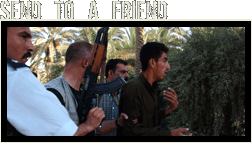Reported War Timeline
April 7th
US Troops enter Baghdad
April 9th
US troops topple Saddam Hussein statue in central Baghdad. The event was organised by a military psychological operations unit.
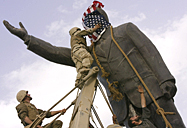
April 10th
US backed Shi'ite cleric Abd al-Majid al-Khoei is stabbed to death in a Shia mosque in Najaf after returning from exile in Britain. His American guards were outside the building during the stabbing.
April 17th
Fighting breaks out between Shia factions - the Sadrists and SCIRI's military wing, the Badr Corps - for control of Baghdad's Sadr City district. The Sadrists manage to repel the attacks and retain control.
April 21st
Jay Garner, the retired US general, arrives in Baghdad to take up the post of Iraq's post-war civil administrator.
|
April 2003 |
Meeting Resistance Timeline
April 9th
Traveller involved in organising civil defense groups in Adhamiya
April 10th to 11th
Teacher acts as guide to foreign fighters opposing US military assault on Adhamiya.
April 12th
Warrior returns to Adhamiya after fighting during the war with his former unit in another province of Iraq.
Week of April 14th
Teacher joins a resistance group as an arms procurer.
Traveller and associates begin organising cells.
Warrior creates his own group of fighters.
Fugitive travels to Ramadi for weapons training.
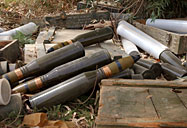
Attacks begin against US troops using weapons left behind by Iraqi military.
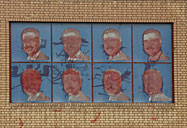
April 28th
Letter, purporting to be from Saddam Hussein, orders military and intelligence services to reform.
|
May 1st
US President George W. Bush declares an end to major combat operations in Iraq from the deck of an aircraft carrier off the coast of California.
May 12th
US administrator Paul Bremer arrives in Baghdad to take over duties from Gen Garner.
May 16th
Bremer issues his first decree, de-Ba'athification of Iraq's institutions.
May 22nd
United Nations passes resolution 1511 mandating US and UK, as occupying powers, to administer Iraq.
May 23rd
Bremer issues his second decree, disbanding the Iraqi armed forces.
|
May 2003 |
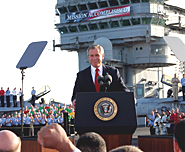
US troops are attacked throughout May
Early May
The Lieutenant contacts his former military colleagues to form a resistance group.
|
US troops are attacked throughout June.
June 6th
US Defence Secretary Rumsfeld says that the attacks against US forces are being carried out by former regime "dead-enders".
June 12th to 15th
US military mounts operations against anti-coalition forces in Baghdad, Fallujah and Baquba.
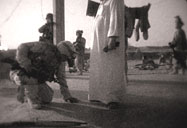
|
June 2003 |
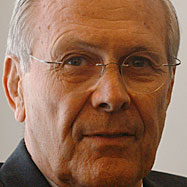 |
July 2nd
President Bush makes his "Bring 'em on" speech.
July 13th
US administrators in Baghdad appoint a governing council for Iraq, based strictly on the Iraqi population's sectarian and ethnic composition.
July 14th
India turns down US request for troops.
July 22nd
Saddam Hussein's sons, Uday and Qusay, killed in gun battle with US troops and aircraft near Mosul.
July 22nd
UN recognises US appointed governing council in Iraq.
|
July 2003 |
The Syrian travels from his home to Falluja.
Throughout this period
Small groups are initially operating independently of one another, recruiting, training and establishing their own methods of security.
Most attacks being carried out using hit-and-run guerrilla tactics.
|
August 7th
The first car bomb attack of the war targets the Jordanian embassy in Baghdad.
August 19th
Truck bomb attack on UN headquarters in Baghdad.
August 29th
Car bomb attack in Najaf kills Mohammed al Hakim, leader of the Shia political party The Supreme Council for Islamic Revolution in Iraq (SCIRI). |
August 2003 |
Work starts on Meeting Resistance
The Teacher is ordered to find specific types of explosives and remote control devices to build IED's.
Although denying responsibility or knowledge of the perpetrators of the attack on the United Nations, The Traveler agrees with the attack because the organisation mandated the US occupation.
|







